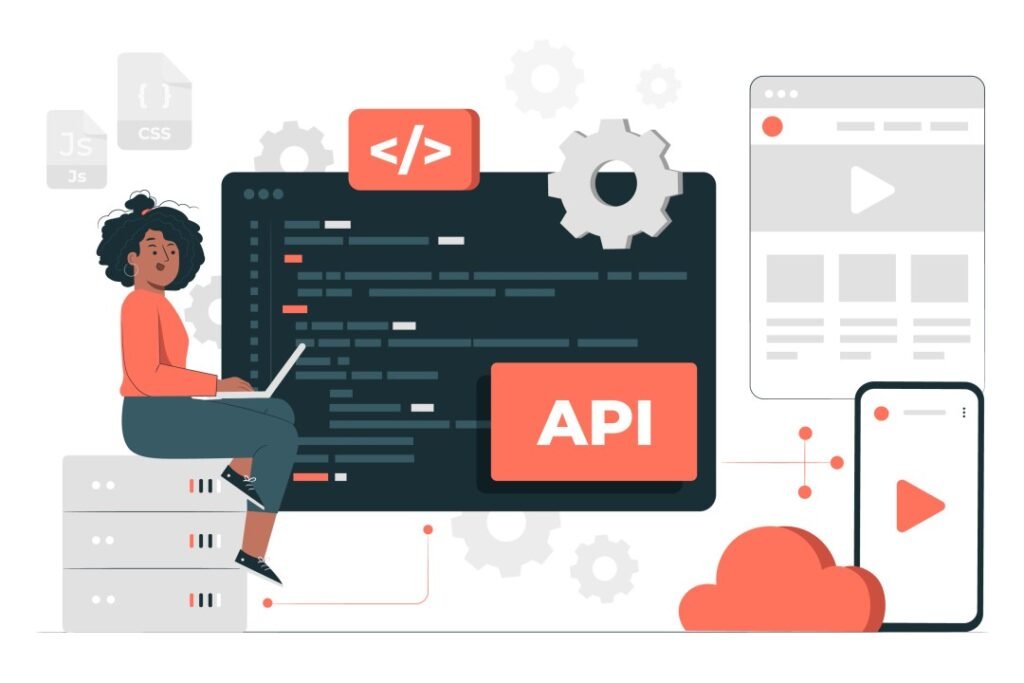In the ever-evolving landscape of digital business, Application Programming Interfaces (APIs) have emerged as indispensable tools, revolutionizing the way organizations operate and interact with technology. This article explores the essence of APIs, shedding light on what they are and how their integration can significantly boost business operations, innovation, and overall efficiency.
1.Demystifying the API:
1.1 Definition:
An Application Programming Interface (API) is a set of protocols, routines, and tools that allows different software applications to communicate and share data with each other. APIs act as intermediaries, facilitating the seamless exchange of information between disparate systems.
1.2 Types of APIs:
– Web APIs (RESTful APIs): Utilize HTTP protocols for communication and are widely used for web and mobile applications.
– Library-Based APIs: Provide a set of functions or procedures within a programming library, enabling developers to build applications more efficiently.
– Operating System APIs: Facilitate interaction between applications and the underlying operating system, enhancing system functionality.
2.The Transformative Power of APIs:
2.1 Streamlining Business Processes:
APIs enable the integration of diverse systems, applications, and services, streamlining business processes. This interoperability reduces manual tasks, minimizes errors, and enhances overall operational efficiency.
2.2 Enhancing Collaboration:
By fostering seamless communication between different software components, APIs facilitate collaboration across teams and departments. This collaborative environment promotes innovation and accelerates development cycles.
3.Key Benefits of API Integration:
3.1 Increased Efficiency and Productivity:
API integration automates data flow between applications, eliminating the need for manual data entry and reducing the risk of errors. This automation enhances efficiency and allows employees to focus on more value-added tasks.
3.2 Accelerated Innovation:
APIs empower businesses to innovate by easily incorporating third-party services and functionalities. This opens up a world of possibilities, enabling organizations to stay agile and quickly adapt to market trends.
3.3 Improved Customer Experience:
APIs play a crucial role in creating a seamless and integrated experience for customers. By connecting various applications, businesses can provide a unified and cohesive user experience, enhancing customer satisfaction and loyalty.
4.Practical Applications of API Integration:
4.1 E-commerce:
APIs are instrumental in e-commerce platforms, enabling smooth transactions, inventory management, and seamless communication between online stores, payment gateways, and shipping services.
4.2 Cloud Computing:
In cloud computing, APIs are essential for managing and interacting with cloud services. They allow businesses to scale resources, integrate cloud-based applications, and optimize their infrastructure.
4.3 Social Media Integration:
APIs play a pivotal role in social media integration, allowing businesses to connect their applications with popular social platforms. This integration enhances marketing strategies, enables social sharing, and provides valuable analytics insights.
5.Challenges and Considerations:
5.1 Security Concerns:
As APIs involve the exchange of sensitive data between applications, ensuring robust security measures is paramount. Businesses must implement authentication, authorization, and encryption protocols to protect against potential vulnerabilities.
5.2 Standardization and Compatibility:
The diverse landscape of APIs often poses challenges in terms of standardization and compatibility. Adopting widely accepted standards and ensuring compatibility across different systems are crucial considerations for successful API integration.
6.Future Trends and Innovations:
6.1 Internet of Things (IoT) Integration:
APIs will play a pivotal role in connecting and managing the vast array of devices in the Internet of Things ecosystem, facilitating data exchange and communication between interconnected devices.
6.2 Artificial Intelligence (AI) and Machine Learning (ML):
APIs will be essential for integrating AI and ML capabilities into various applications, allowing businesses to harness the power of intelligent automation and data-driven insights.
Conclusion:
In the digital age, the integration of APIs has become a cornerstone for businesses looking to stay competitive, agile, and innovative. By fostering interoperability between applications and services, APIs streamline operations, enhance collaboration, and provide a foundation for future technological advancements. Embracing the power of APIs is not just a technological choice but a strategic imperative for businesses aiming to thrive in the dynamic and interconnected landscape of the modern digital economy.


